Wonshik Choi
Implementation of reflection matrix microscopy: An algorithm perspective
Jul 02, 2024Abstract:Over the past decade, reflection matrix microscopy (RMM) and advanced image reconstruction algorithms have emerged to address the fundamental imaging depth limitations of optical microscopy in thick biological tissues and complex media. In this study, we introduce significant advancements in reflection matrix processing algorithms, including logical indexing, power iterations, and low-frequency blocking. These enhance the processing speed of aperture synthesis, 3D image reconstruction, and aberration correction by orders of magnitude. Detailed algorithm implementations, along with experimental data, are provided to facilitate the widespread adoption of RMM in various deep-tissue imaging applications.
Ptychographic lensless coherent endomicroscopy through a flexible fiber bundle
Jan 31, 2024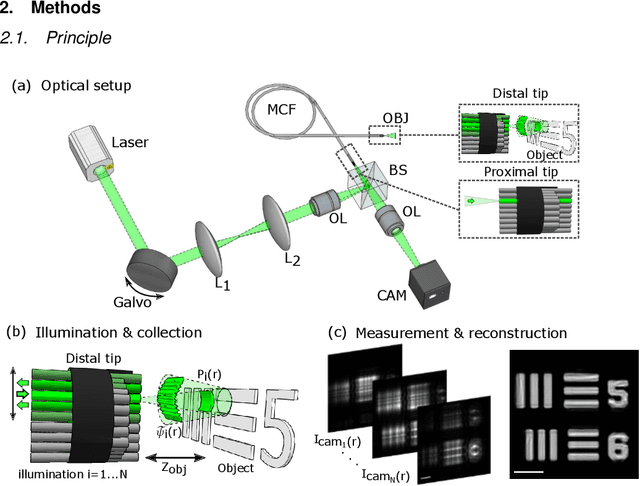
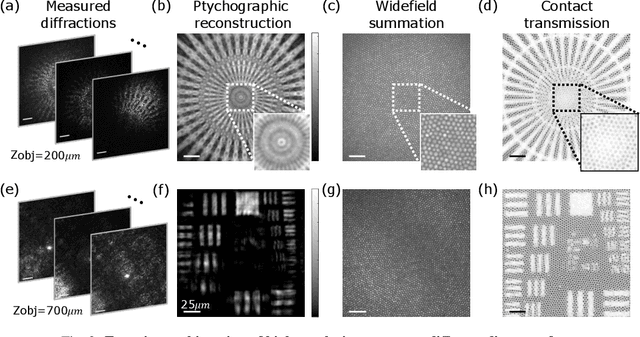
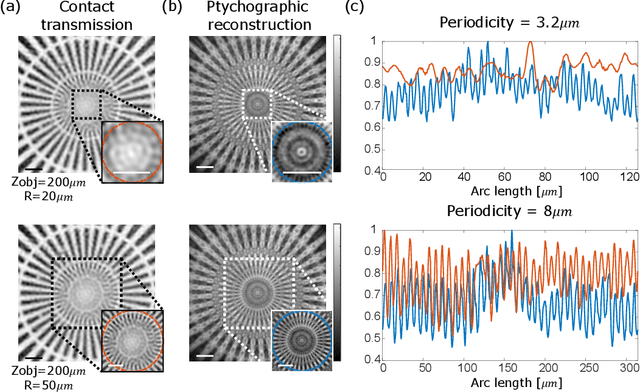
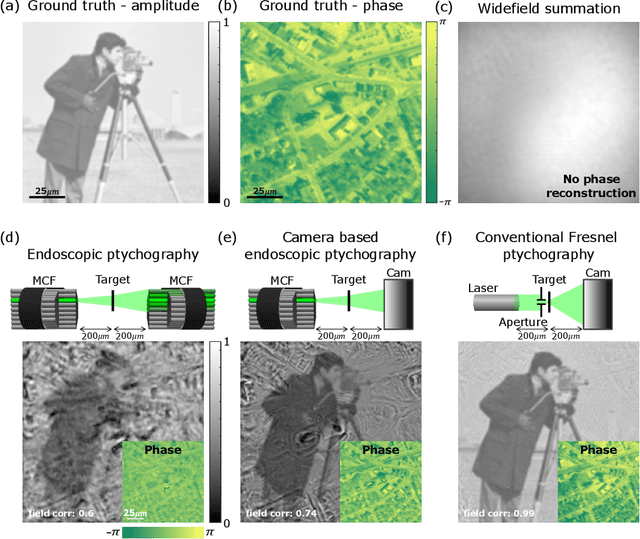
Abstract:Conventional fiber-bundle-based endoscopes allow minimally invasive imaging through flexible multi-core fiber (MCF) bundles by placing a miniature lens at the distal tip and using each core as an imaging pixel. In recent years, lensless imaging through MCFs was made possible by correcting the core-to-core phase distortions pre-measured in a calibration procedure. However, temporally varying wavefront distortions, for instance, due to dynamic fiber bending, pose a challenge for such approaches. Here, we demonstrate a coherent lensless imaging technique based on intensity-only measurements insensitive to core-to-core phase distortions. We leverage a ptychographic reconstruction algorithm to retrieve the phase and amplitude profiles of reflective objects placed at a distance from the fiber tip, using as input a set of diffracted intensity patterns reflected from the object when the illumination is scanned over the MCF cores. Our approach thus utilizes an acquisition process equivalent to confocal microendoscopy, only replacing the single detector with a camera.
Holistic random encoding for imaging through multimode fibers
Dec 30, 2014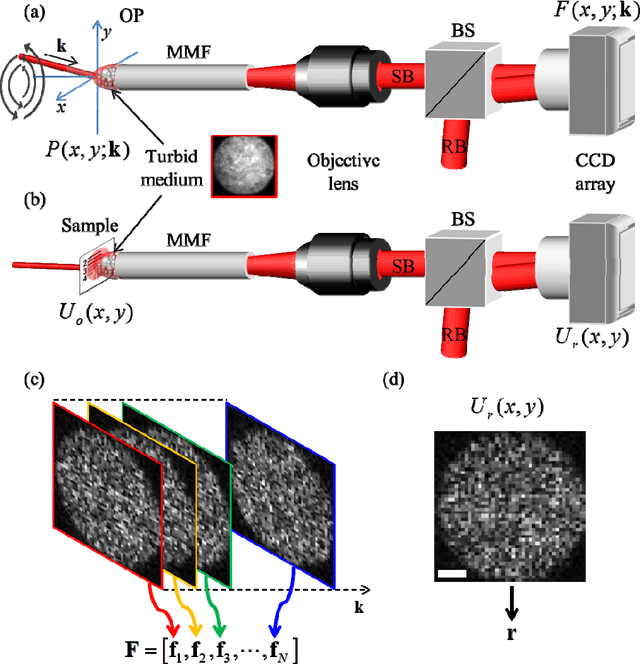
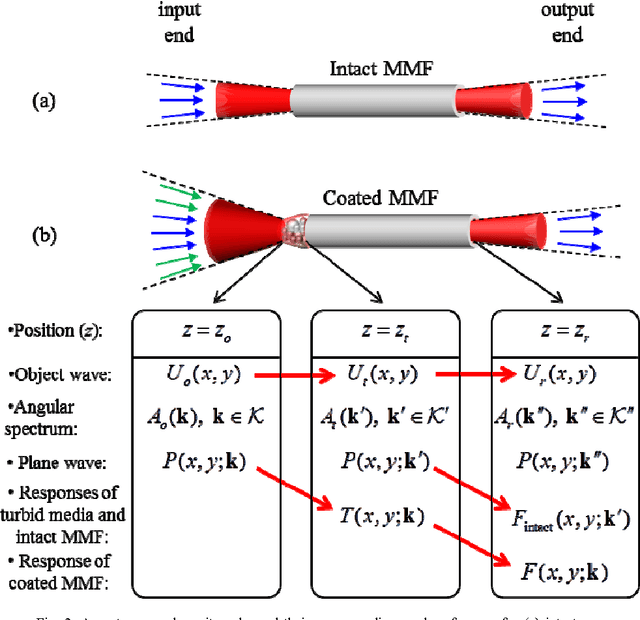
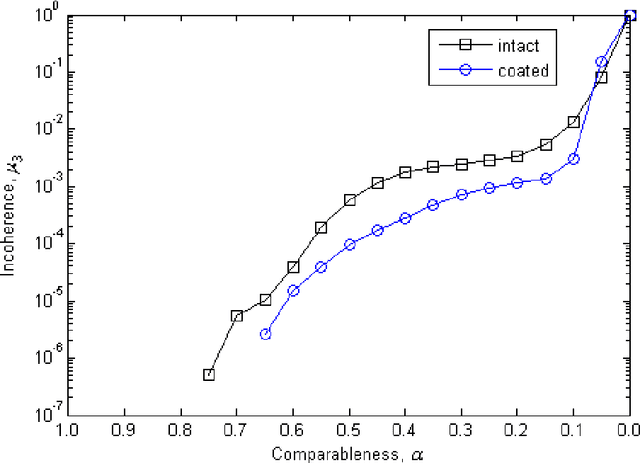
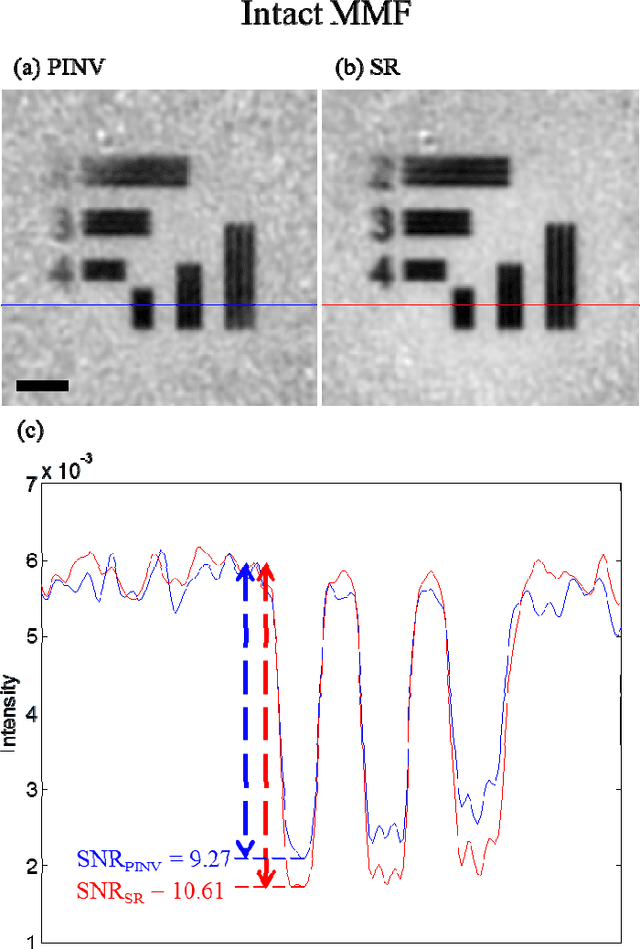
Abstract:The input numerical aperture (NA) of multimode fiber (MMF) can be effectively increased by placing turbid media at the input end of the MMF. This provides the potential for high-resolution imaging through the MMF. While the input NA is increased, the number of propagation modes in the MMF and hence the output NA remains the same. This makes the image reconstruction process underdetermined and may limit the quality of the image reconstruction. In this paper, we aim to improve the signal to noise ratio (SNR) of the image reconstruction in imaging through MMF. We notice that turbid media placed in the input of the MMF transforms the incoming waves into a better format for information transmission and information extraction. We call this transformation as holistic random (HR) encoding of turbid media. By exploiting the HR encoding, we make a considerable improvement on the SNR of the image reconstruction. For efficient utilization of the HR encoding, we employ sparse representation (SR), a relatively new signal reconstruction framework when it is provided with a HR encoded signal. This study shows for the first time to our knowledge the benefit of utilizing the HR encoding of turbid media for recovery in the optically underdetermined systems where the output NA of it is smaller than the input NA for imaging through MMF.
 Add to Chrome
Add to Chrome Add to Firefox
Add to Firefox Add to Edge
Add to Edge